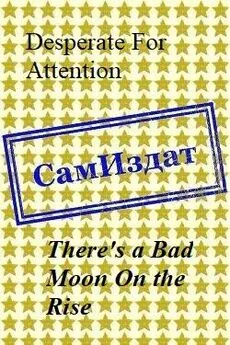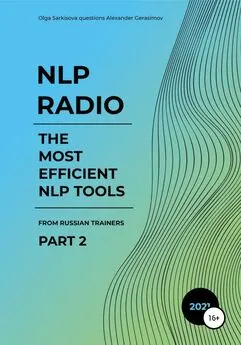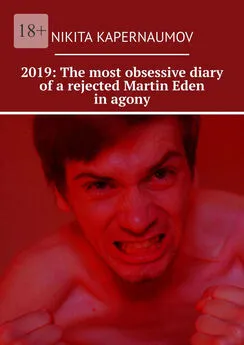Tom Leksey - Locked-in Range Analysis: Why most traders must lose money in the futures market (Forex)
- Название:Locked-in Range Analysis: Why most traders must lose money in the futures market (Forex)
- Автор:
- Жанр:
- Издательство:неизвестно
- Год:2018
- ISBN:нет данных
- Рейтинг:
- Избранное:Добавить в избранное
-
Отзывы:
-
Ваша оценка:
Tom Leksey - Locked-in Range Analysis: Why most traders must lose money in the futures market (Forex) краткое содержание
Locked-in Range Analysis: Why most traders must lose money in the futures market (Forex) - читать онлайн бесплатно ознакомительный отрывок
Интервал:
Закладка:
Foreword
It is common for reasonable people to learn from their mistakes or from the mistakes of others, realizing the causes and effects of actions that lead to undesirable results. Knowing the statistics of those who “earn” on market speculation, each is certain that he is not like the others and that everything will turn out for him. And they are not even considering to leave this “way of making money”. While losing more and more money and time to find out “why trading is not for them”, people are being devoured by their failures because to accept a failure for them is equivalent to recognizing themselves an asshole.
Taking the reason for “why most traders must lose money in the futures market”, as a consequence, you truly realize your lack of advantages over the other market participants in the endless “exchange wars”, when one does not mind to yield this “battle” to others.
Chapter 1. Preparing to Analyze
1.1
Why Do We Analyze Futures Instead of Forex?
Starting with the Bretton Woods currency system (1944), the US dollar has been the main international reserve currency, so the quotes of other countries’ currencies are expressed through the US dollar.
Types of currency quotes:
– Direct quote (fixed amounts of the foreign currency are expressed as variable amounts of the domestic currency)
Example (US dollar is not the domestic currency): USD/CAD 1.3090 means 1 USD = 1.3090 CAD
– Indirect quote (fixed amounts of the domestic currency are expressed as variable amounts of the foreign currency)
Example (US dollar is not the domestic currency): EUR/USD 1.0680 means 1 EUR = 1.0680 USD
– Cross quote (the ratio between the two currencies, which is determined based on the rates of these currencies relative to a third currency)
Example: EUR/USD 1.0680, GBP/USD 1.2470 means EUR/GBP 0.8565 (1.0680/1.2470)
Based on the location of performing currency transactions, there is an exchange market and over-the-counter market.

Table 1. Comparison of exchange and over-the-counter market
Unlike exchange market, in the over-the-counter market there is no central marketplace (the exchange clearing house), where all information about the transactions, on the prices reached by the parties, is received. In addition, there is nobody that would control and regulate the activities of all participants in the trading process. Therefore, different exchange dealers may have different quotes of the same traded instrument (such as a currency). Nevertheless, the prices from exchange trades, on the relevant basic commodities for the nearest most liquid futures contracts, are used for the formation of over-the-counter quotes (WM/Reuters benchmark rates are used as standard rates for determining the OTC exchange rate).
Since Forex market is an over-the-counter market, and the transactions made in it (demand and supply) cannot influence the change in quotes, futures on the relevant currencies should be used for analysis and forecasting.

Table 2. The most liquid CME currency futures contracts as of 01.02.2017 and the corresponding Forex currency pairs. Types of Quotes – US dollar is not the domestic currency. Volume data source: cmegroup.com
Charts of Forex direct quotes are a mirror image of the relevant CME futures charts. Charts of Forex cross quotes (Examples: AUD/CAD; AUD/JPY; CAD/JPY; EUR/AUD; EUR/CAD; EUR/GBP; EUR/JPY; GBP/AUD; GBP/CAD; GBP/JPY) are the mathematical relationships of direct and indirect quotes, therefore, those who trade cross quotes are Lucky-traders.
1.2 An Introductory Guide to Futures
What Are Futures?
Standardized (according to quality, quantity, delivery time and place) contracts, for the purchase and sale of financial instruments or physical commodities, for future delivery on a regulated commodity futures exchange.
Who Trades Futures?
Conventionally, traders are divided into two main categories, hedgers and speculators. Hedgers use the futures market to manage (to reduce or limit) price risk associated with an adverse price change. (Examples: airlines hedging fuel costs; jewelry manufacturers hedging the cost of gold and silver; farmers sell futures on the raised crops to hedge against a drop in commodity prices;). Speculators, on the other hand, accept that risk in an attempt to profit from favorable price movement. While futures help hedgers manage their exposure to price risk, the market would not be possible without the participation of speculators. They provide the bulk of market liquidity, which allows the hedger to enter and exit the market in an efficient manner.
Why Trade Futures?
In addition to hedging, futures trading provides the trader (risk-taking investor) with greater flexibility because of liquidity and capital efficiency because of leverage.
Leverageis an amount of money deposited by both the buyer and seller of a futures contract to ensure their performance of the contract terms. The performance bond may represent only a fraction of the total value of the contract, often 2 to 12 %, making futures a highly leveraged trading instrument. Therefore, futures contracts represent a large contract value that can be controlled with a relatively small amount of capital.
What does it mean?
The Euro FX futures contract could have a value of 125,000 EURO, but you would be able to buy or sell this contract by posting a performance bond of about 2,750 USD, which is only 2% of the contract value (EUR/USD 1.1000).
Liquidity
A condition that describes the ability to execute orders of any size quickly and efficiently without a substantial affect on the price.
Liquidity can be described in terms of volume and open interest (abbr. OI). Each unit of volume represents a complete transaction. When one trader buys a contract and another trader sells the same contract, that transaction is recorded as one contract traded. Open interest represents the total number of contracts, either long or short, that have been entered into and not yet offset or fulfilled by delivery. Each open transaction has a buyer and seller, but for calculation of open interest only one side of the contract is counted. Volume and open interest are reported daily and are used by traders to determine the level of activity in a market for a given day or a price movement.
To quickly gauge the liquidity of a market, traders may look at 1) the distance between the best bid and ask prices (bid-ask Spread), 2) the number of limit orders pending in the market at each bid and ask level (Level II) and 3) the frequency with which trades take place (Time & Sales).
Конец ознакомительного фрагмента.
Текст предоставлен ООО «ЛитРес».
Прочитайте эту книгу целиком, купив полную легальную версию на ЛитРес.
Безопасно оплатить книгу можно банковской картой Visa, MasterCard, Maestro, со счета мобильного телефона, с платежного терминала, в салоне МТС или Связной, через PayPal, WebMoney, Яндекс.Деньги, QIWI Кошелек, бонусными картами или другим удобным Вам способом.
Интервал:
Закладка:










